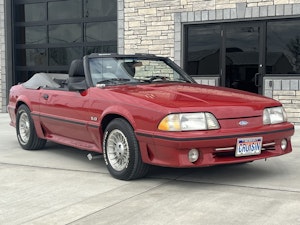Media | Articles
Here is a look at the tricks inside GM’s big 2.7-liter four-cylinder
It’s nothing new to see modern engines that are packing more and more technology in smaller and smaller packages. While that typically means smaller displacements, the new GM 2.7-liter inline-4 proves that is not always the case. The go-to four-cylinder engine for many OEMs is a two-liter turbocharged mill, but Cadillac and Chevrolet are now building an engine with almost 150% the capacity along with a unique turbocharger. Here’s why.
The old saying is “there’s no replacement for displacement,” and there is a reason it is an old saying, not a new one. Modern engine tuning and technology have allowed boosted engines to size-down displacement with little compromise. One engine utilizing tech like that is found under the hood of the Chevrolet Silverado and the Cadillac CT4-V and bucks the trend by packing an extra .7-liter of displacement along with two other key features which Engineering Explained dove into in it’s latest YouTube video.
The first is variable valve timing. True, this is and of itself is not groundbreaking tech, but GM utilizes it a bit differently than most. Traditionally, variable valve timing is used to create two camshaft profiles that the engine can automatically switch between–one profile with valve lift and duration (how long the valve is open) for low rpm, and another that is optimized for higher-rpm. This new engine sports three lobes for each valve. The first two are the traditional pair, while the third for the center two cylinders have zero valve lift for both the intake and exhaust valves, which combines with shutting off the fuel to those cylinders to essentially turn this four-cylinder to a two-cylinder in low-load scenarios.
The second trick is the dual volute turbocharger. This is not to be confused with a twin-scroll turbo. The core concept of the dual volute turbocharger is to separate the exhaust pulses as they exit the cylinders. The twin-scroll design has the same goal, but the dual-volute concept takes it to the next level in terms of turbocharger efficiency. The cylinders are paired, with each pair’s exhaust gases traveling in individual volutes (think an intake runner but for exhaust) that act on the turbocharger’s impeller on opposite sides.
Marketplace
Buy and sell classics with confidence
This splitting of the exhaust pulses allows the turbo to spool even quicker and at lower rpm. With a turbo producing maximum boost at lower rpm, the engine can make more power at lower rpm. Typically that low grunt was reserved for big displacement engines that could intake larger amounts of air and fuel naturally at low speed. Now that turbo tech allows the cylinder to be efficiently pressure fed at those lower speeds, we might see these smaller displacement engines catch up to their big-bore counterparts.










